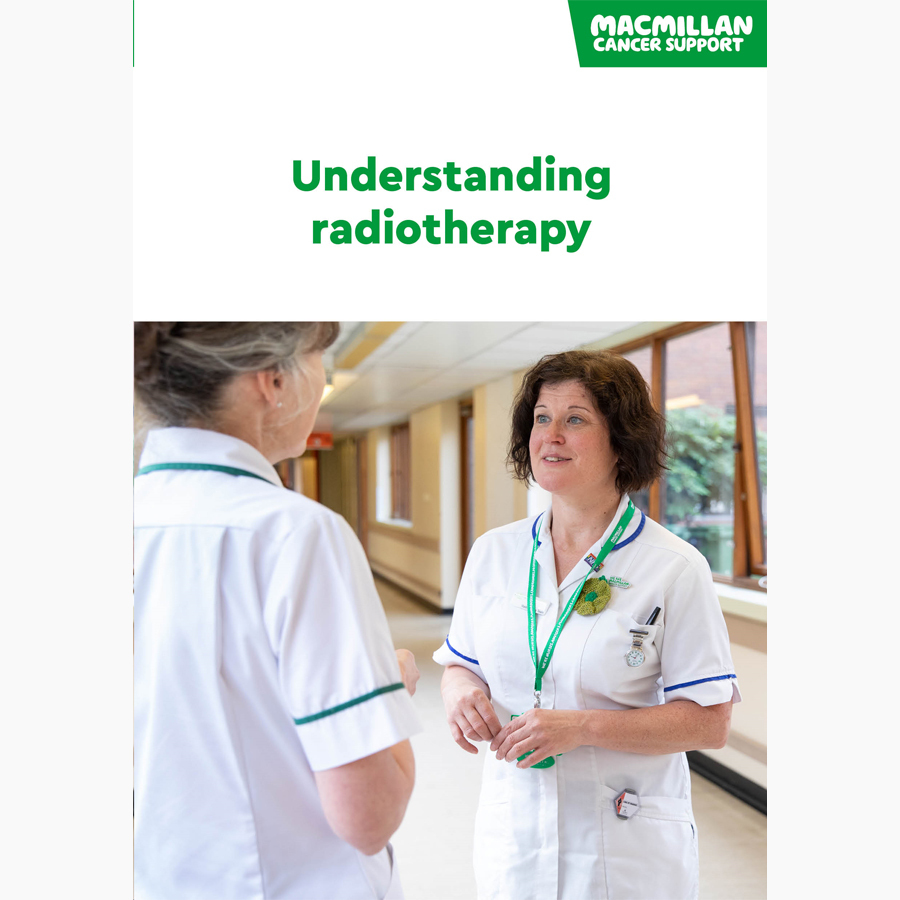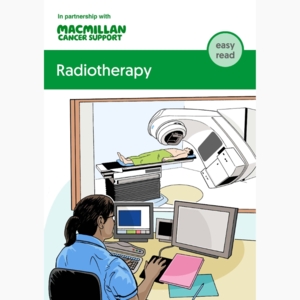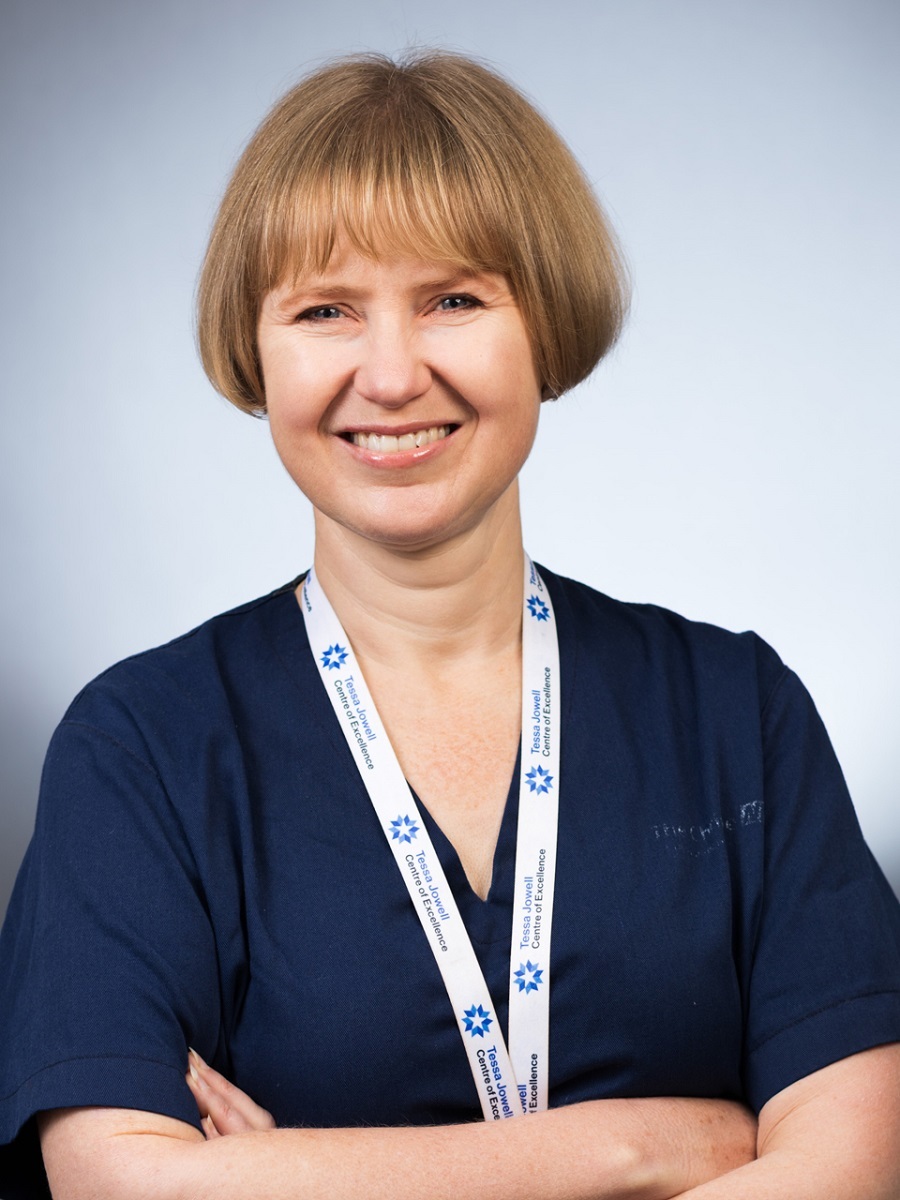Radiotherapy for a brain tumour
You might be offered radiotherapy to treat a tumour in your brain. This can be given in different ways.
On this page
-
Radiotherapy to the brain
-
External beam radiotherapy for a brain tumour
-
Stereotactic radiosurgery (SRS)
-
Stereotactic radiotherapy (SRT)
-
Proton beam therapy
-
Masks and headframes
-
Planning your treatment
-
Having radiotherapy to the brain
-
Side effects of radiotherapy to the brain
-
Late effects of brain radiotherapy
-
How we can help
Radiotherapy to the brain
Radiotherapy uses high-energy rays to destroy the tumour cells and control the tumour, while doing as little harm as possible to normal cells. Radiotherapy machines are designed to limit the damage to healthy brain tissue.
You may have radiotherapy:
- as your main treatment
- after surgery, if a tumour cannot be completely removed
- after surgery, to reduce the risk of the tumour coming back
- with chemotherapy
- if a tumour comes back.
Radiotherapy is always carefully planned by a team of experts. This includes a clinical oncologist and radiographers, who are experts in giving radiotherapy treatment. They will explain your treatment plan and what to expect.
Radiotherapy can be given in different ways to treat a brain tumour.
Booklets and resources
External beam radiotherapy for a brain tumour
Radiotherapy for a brain tumour uses a radiotherapy machine that aims high-energy rays at the brain. This is called external beam radiotherapy. It is normally given as a number of short, daily treatments in a radiotherapy department. Each daily treatment is called a fraction.
Your radiotherapy treatment is planned carefully to give the highest possible dose to the tumour, while limiting the dose to the surrounding healthy brain tissue.
There are different techniques used to shape and focus the radiotherapy beams to treat the tumour. These include:
- intensity-modulated radiotherapy (IMRT)
- volumetric-modulated arc radiotherapy (VMAT).
Different hospitals may use different techniques, but they all work in similar ways and have the same benefits.
The treatments are usually given 5 days a week, from Monday to Friday, with a rest at the weekend. Some people only have treatment 3 days a week. Your treatment may last from 2 to 6 weeks, depending on the type of tumour and its size.
Usually, each appointment takes about 10 to 30 minutes. But the treatment itself only takes a few minutes. Your doctor, specialist nurse or radiographer will explain your treatment and how long it will take.
Other ways of having radiotherapy include:
- stereotactic radiosurgery (SRS)
- stereotactic radiotherapy (SRT)
- proton beam therapy.
The type of radiotherapy used will depend on the type and size of the brain tumour and your individual situation.
Stereotactic radiosurgery (SRS)
Stereotactic radiosurgery (SRS) gives radiotherapy as a single higher dose of radiotherapy, to a small area. SRS does not involve any surgery.
There are different types of radiotherapy machines which can deliver SRS. These include:
- Gamma Knife™
- CyberKnife™
- linear accelerator (LINAC).
The amount of time it takes to have the treatment depends on the type of machine that is used. A session of treatment can take from about 15 minutes up to 4 hours. Sometimes, it may take longer.
SRS is not suitable for everyone with a brain tumour. It is usually only used to treat small tumours. The most common type of tumours treated with SRS are brain metastases. These are tumours which have travelled to the brain from other parts of the body. SRS is also used for other types of tumours, including small benign (non-cancerous) tumours.
Your doctor can explain which treatment is best for you and how long the treatment may take.
Sometimes, you may have this type of radiotherapy in smaller doses over a number of days or weeks. This is called stereotactic radiotherapy (SRT). Each daily dose is called a fraction.
We have more information about having SRS for a brain tumour.
Stereotactic radiotherapy (SRT)
SRT is another way of accurately focusing external beam radiotherapy.
You may have SRT in the following ways:
- You may have SRT in the same way as standard external beam radiotherapy. This means using short, daily treatments usually over 6 weeks. This is called fractionated stereotactic radiotherapy (FSRT).
- You may have SRT as a few sessions of higher dose treatment. You usually have it for 3 or 5 sessions. This is called stereotactic radiotherapy or hypo-fractionated stereotactic radiotherapy.
A session of treatment usually takes about 15 to 30 minutes, depending on the type of machine used. SRT is not suitable for everyone with a brain tumour. It may depend on the type and size of the tumour.
Proton beam therapy
Proton beam therapy is a type of external beam therapy that uses protons instead of high-dose x-rays. Protons are parts of atoms. The protons are shaped into a beam that is targeted at the cancer.
Proton beam therapy is not used for all types of brain tumours. It is only used for a small number of people with certain types of brain tumour. For adults, these may include some tumours affecting the base of the skull and a rare type of tumour called medulloblastoma. Your doctor will explain if this treatment might benefit you.
You have proton beam therapy using specialised equipment that is not available in all UK hospitals. You may be referred to a specialist hospital if you are having this type of treatment.
We have more information about having proton beam therapy.
Masks and headframes
During radiotherapy you may need to wear a light-weight mask that covers your face and the front of your head.
For your treatment, you lie on a treatment couch. The radiographers gently place the mask over your head and fix it to the couch. This helps you stay still in the right position. This makes the treatment as accurate as possible.
The radiotherapy team make the mask for you before your treatment. Masks are usually made from plastic mesh that is moulded to fit the shape of your face. This is a simple procedure where the plastic netting is warmed in a water bath. Once it is warm, it is gently stretched over your face.
The mask fits tightly but should not be uncomfortable. You only wear it during your planning scans and treatment sessions. You can breathe normally while you are wearing it.
If you are having SRS you may wear a light-weight metal head frame. Head frames are usually fitted on the same day as your treatment. Some frames can be fitted then taken off until your treatment session. Others are fixed. This means you wear the frame all day until your treatment session is over. Before your treatment, you can move around with it on and can eat and drink normally.
You may feel nervous about wearing a mask or head frame. Most people cope well with the support of the radiotherapy team. Tell your team if you are worried or uncomfortable. They can help you.
We have more information about how a radiotherapy mask is made.
Planning your treatment
During your planning appointment, you will have a scan of your brain. You wear the mask or frame while having a CT scan. Most people will also have an MRI scan.
Your radiotherapy team uses information from the scans to plan your treatment. They will explain your treatment plan and how many times you need to visit the radiotherapy department.
The radiographers help you get into position for the scan. You lie on a treatment couch in the same position you will be in for treatment. If you need a mask or head frame, the radiographers gently fix this to the couch.
The radiographers may make a few ink marks on the mask or head frame. These marks help make sure you are in the correct position for each session of radiotherapy.
During the scan you will be alone in the room. The radiographers can see and hear you from outside the room. There is usually an intercom, so you can talk to them if you need to.
Having radiotherapy to the brain
When you have the treatment, you lie in the same position as you did for the planning scan. The radiographers will help you and make sure you are comfortable. They may use foam supports to help.
They will tell you how long your treatment will take. When you are in the correct position, they leave the room and you are given your treatment. They may take some x-rays during treatment to make sure you are in exactly the right position.
Having radiotherapy is not painful. You may hear a slight buzzing noise from the radiotherapy machine. The radiotherapy machine may move around you during the treatment, or the couch you lie on may change position.
In some treatment rooms you can listen to music to help you relax. If you would like to listen to your own music, ask your radiotherapy team if this is possible.
During the treatment, the radiographers can see and hear you from outside the room. There is usually an intercom, so you can talk to them if you need to.
How diagnosis affects your right to drive
Following diagnosis and treatment for a brain tumour, most people will not be allowed to drive for a period of time. If you drive, it is important to discuss with your doctor how your diagnosis and treatment for a brain tumour affects your right to drive.
If you have a driving licence, you must tell the licencing agency (DVLA or DVA) that you have been diagnosed with a brain tumour. We have more information about how a brain tumour may affect your right to drive.
Side effects of radiotherapy to the brain
You may develop side effects during or after your treatment. These can depend on:
- the area of the brain that has been treated
- the amount of radiotherapy given.
Your radiotherapy team will explain what is likely with your treatment. Some side effects are mild and easy to cope with. Others may be managed with drugs or other treatments.
Side effects usually improve over a few weeks or months after your treatment ends. Sometimes side effects or symptoms of the brain tumour get worse for a while after treatment has finished. If this happens, you may worry that the treatment is not working. But it is usually a normal reaction to the radiotherapy. Side effects may also happen if the amount of steroids you have been taking have been reduced or stopped.
Tell your radiotherapy team straight away if your side effects get worse during or after treatment. They can give you advice on how to manage them.
Tiredness (fatigue)
Radiotherapy often makes people feel tired. Tiredness (fatigue) may get worse as treatment goes on. If you are having radiotherapy alongside other treatments, such as surgery or chemotherapy, you may feel more tired. But there are things you can do to help, such as:
- get plenty of rest
- do some gentle exercise, such as short walks, for about 30 minutes a day
- eat a healthy diet and drink plenty of fluids
- ask others for help with everyday jobs.
Radiotherapy to the brain can cause extreme tiredness 4 to 8 weeks after treatment. You may have very little energy, feel drowsy and spend a lot of time sleeping. It usually gradually gets better over a few weeks. But some people may continue to feel tired for weeks or months. Or sometimes longer.
We have more information about coping with tiredness (fatigue).
Booklets and resources
Headaches
Tell your radiotherapy team if you get headaches during radiotherapy. They can give you painkillers or steroids to help.
Hair loss
Your radiotherapy team can explain how your treatment may affect your hair. You may lose some hair in the area being treated. You may also lose hair on the opposite side of your head. This is where the radiation beams exit. Your hair will usually start to grow back within 2 to 3 months after treatment ends. Sometimes it grows back a slightly different colour or thinner than before.
We have more information about coping with hair loss.
Skin irritation
Your skin in the treated area may become sore or itchy.
If you have white skin the treated area may become red. If you have black or brown skin, the area might get darker.
Your radiographer or specialist nurse will give you advice on taking care of your skin. Tell your radiotherapy team straight away if you have these symptoms. They can give you advice and treatments if needed.
Skin reactions should get better within 4 weeks of treatment finishing.
During your treatment, you are usually advised to do the following:
- Wash your hair or scalp gently with lukewarm or cool water. Use non-perfumed shampoo or soap.
- Pat your hair or scalp dry gently with a soft towel. Avoid rubbing it or using a hair dryer.
- Follow the advice your radiotherapy team gives you about using moisturisers.
- Wear a scarf or hat to protect your head from the sun or cold.
- If you shave your head, use an electric razor instead of wet shaving.
Your skin in the treated area may be more sensitive to the sun after treatment. You may find that this area burns more easily. Take extra care in the sun during treatment and for at least 1 year afterwards. Cover up or use suncream with a sun protection factor (SPF) of at least 30.
Feeling sick
If you feel sick, your doctor can give you anti-sickness drugs to help. If you do not feel like eating, try having nutritious, high-calorie drinks. You doctor may be able to arrange these for you, or you can buy them from most chemists.
We have more information about coping with nausea and a loss of appetite.
Fits (seizures)
Radiotherapy can cause some swelling in the brain. This can make it more likely to have a seizure. This may depend on the area you are having treatment, or if you were already having seizures before treatment. Medication to control seizures can help reduce the risk of seizures. These are called anticonvulsants. It is important to talk to your doctor, nurse or radiographer about any symptoms you have.
Fertility
Your doctor or nurse can tell you if treatment is likely to affect your fertility. Radiotherapy to the pituitary gland at the base of the brain may sometimes affect fertility.
We have more information about fertility.
Support from Macmillan
Macmillan is here to support you. If you would like to talk, you can do the following:
- Call the Macmillan Support Line for free on 0808 808 00 00.
- Chat to our specialists online.
- Visit our radiotherapy and side effects forum to talk with people who have been affected by radiotherapy, share your experience, and ask an expert your questions.
Late effects of brain radiotherapy
Radiotherapy can cause side effects that develop months or, years after treatment. These are called late effects. Current ways of giving radiotherapy are better at protecting healthy brain tissue, so late effects are becoming less common and less severe.
Possible late effects depend on the amount and area of the brain being treated.
Your doctor will talk to you about the risk of late effects before your radiotherapy starts. This is called consent for treatment. You can weigh up the benefits and risks of having radiotherapy. The benefits of having radiotherapy usually outweigh the risk of late effects.
After treatment, you will have regular follow-up appointments with your doctor, nurse or radiographer. Tell your treatment team if you are worried about any side effects. They can help you manage them.
Late effects of radiotherapy may include the following changes.
-
Changes to your memory, thinking or reasoning
This is called cognitive impairment. Some short-term memory loss, or being forgetful, is common after radiotherapy. This can sometimes get worse in the years after treatment. Your cancer doctor, specialist nurse or radiographer can talk to you about ways to help you cope with this. We also have more information on how to manage cognitive changes.
-
Changes in hormone levels
If your treatment involves the pituitary gland or part of the brain called the hypothalamus your hormone level may change. This can cause different symptoms, including:
- severe tiredness
- changes to your period
- changes to your sex drive.
You may have hormone treatments. You may also be referred to a doctor specialising in hormone problems, called an endocrinologist.
-
Hearing problems
You may notice a ringing sounds in your ear (tinnitus), muffled hearing or a feeling of having blocked ears. You may be referred to a specialist team called the ear nose and throat (ENT) team.
-
Eye problems
If you have radiotherapy close to your eye, your eye might feel dry. This can be treated with eye drops. The clear lens of the eye might become cloudy or blurred which means you cannot see as well. This is called a cataract. If a cataract develops, it is usually some years after radiotherapy. Cataracts can usually be easily treated with a small operation. Eye problems are less common due to the modern radiotherapy techniques.
-
Radiation necrosis
This can happen if some brain tissue is damaged by radiotherapy. Many people do not have any symptoms, but a small number of people may. Symptoms are different for different people but can include nausea, headaches and risk of seizures. Your doctor, specialist nurse or radiographer can explain more about this. They can give you advice. They may also give you medicine to help.
-
A higher risk of having a stroke
This is due to changes in the small blood vessels in the brain in the years after treatment. Having a healthy diet, exercising regularly and not smoking can reduce the risk of a stroke. If you have high blood pressure or diabetes, it is important that it is controlled and treated. Make sure that any doctors treating you know that you have had radiotherapy treatment to the brain.
-
Second cancer
Some people may develop a second cancer in the treated area years later. This is less common with modern radiotherapy techniques. Your doctor will explain more about this when you sign your consent form for treatment.
About our information
This information has been written, revised and edited by Macmillan Cancer Support’s Cancer Information Development team. It has been reviewed by expert medical and health professionals and people living with cancer.
-
References
Below is a sample of the sources used in our primary brain tumour information. If you would like more information about the sources we use, please contact us at informationproductionteam@macmillan.org.uk
EANO-ESMO Clinical Practice Guidelines for prophylaxis, diagnosis, treatment and follow-up: Neurological and vascular complications of primary and secondary brain tumours. 2021. Available from www.eano.eu/publications/eano-guidelines/eano-esmo-clinical-practice-guidelines-for-prophylaxis-diagnosis-treatment-and-follow-up-neurological-and-vascular-complications-of-primary-and-secondary-brain-tumours [accessed August 2024].
NICE Guideline NG99. Brain tumours (primary) and brain metastases in over 16s. 2018 (updated 2021). Available from: www.nice.org.uk/guidance/ng99 [accessed August 2024].
Date reviewed

Our cancer information meets the PIF TICK quality mark.
This means it is easy to use, up-to-date and based on the latest evidence. Learn more about how we produce our information.
The language we use
We want everyone affected by cancer to feel our information is written for them.
We want our information to be as clear as possible. To do this, we try to:
- use plain English
- explain medical words
- use short sentences
- use illustrations to explain text
- structure the information clearly
- make sure important points are clear.
We use gender-inclusive language and talk to our readers as ‘you’ so that everyone feels included. Where clinically necessary we use the terms ‘men’ and ‘women’ or ‘male’ and ‘female’. For example, we do so when talking about parts of the body or mentioning statistics or research about who is affected.
You can read more about how we produce our information here.








